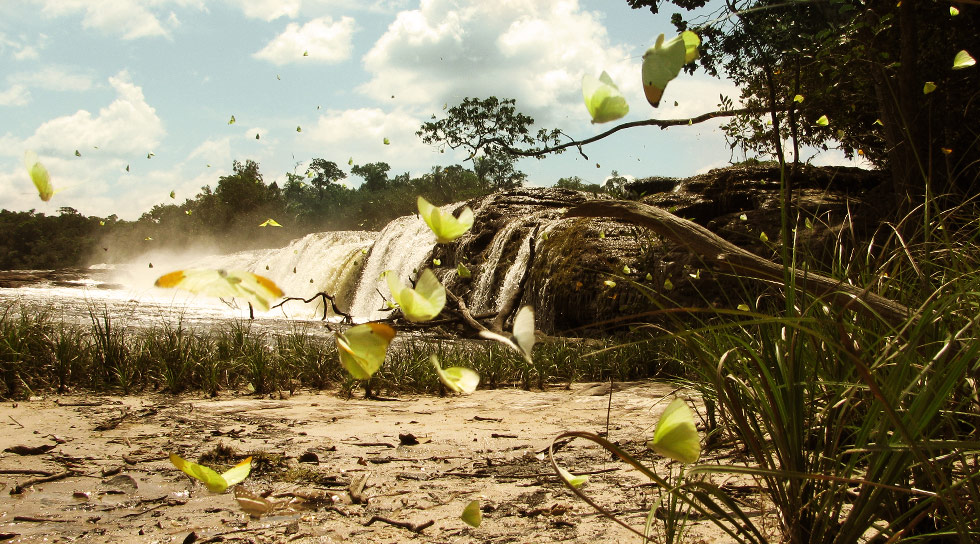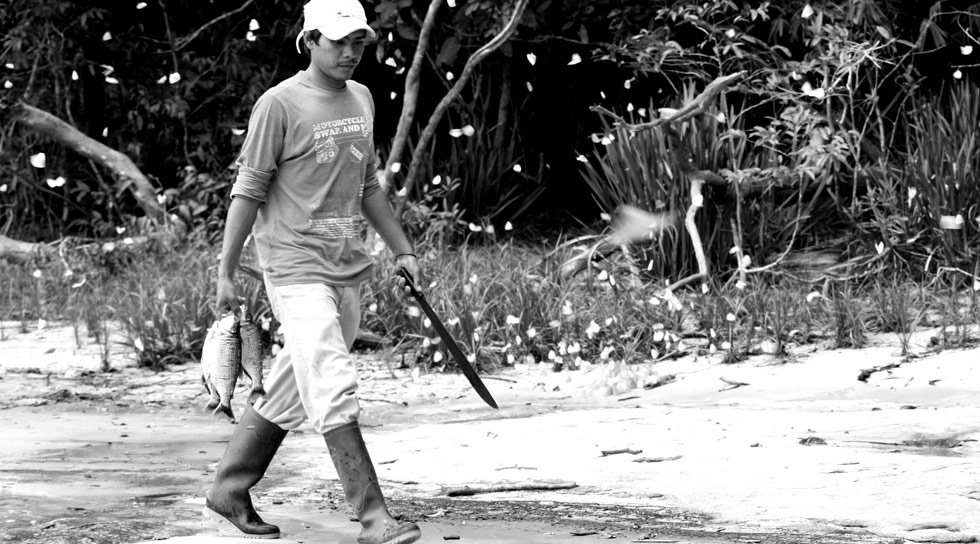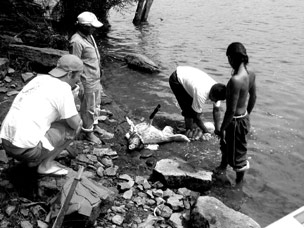Strangely the noxious swarm of mosquitos intent on doing me harm had ebbed, the growl of the Chiribiquete waterfall no longer sounded, as if its familiarity to my ears after a few hours had dulled the noise of the incessant tumble of water and the sky had opened to reveal an unforgettable jungle scene here in Colombia’s southern forests in the department of Caquetá.
By the looks of things a hard rain was coming our way and off in the distance lightening flashed menacingly. I looked back at where I had slung my hammock, even beneath the thick set foliage there was no way I was going to remain dry after an Amazonian downpour. I felt envious of my expedition companions and their compact tents. I had neither a bivouac nor a large enough waterproof. Rather than fret I just secured my camera.
For what it was worth only one day previously I had been christened “Rambo” by our guides and now their hammocks were strung up in an arc about my campsite, they knew best and I was amongst them. Last night I was ridiculing German, another of our expedition group, for having pitched his tent on the river’s beach putting himself at risk by striking camp in favored Boa hunting territory. Upon learning this I had sought out the highest, smoothest, flat topped boulder upon which to settle down for the night, surely the Boas here would get German first, and then perhaps other members of the expedition before they got to me.
The misnomer “Rambo” came about when half way through the first day of our three day river trip our guides Adán and Chayan had spotted a family of floating peccaries that had come out the losers in a battle with the nearby rapids of Gapitana. Adán, with a few deft and expert swipes of his razor-edged machete – his skill turning all of us seasoned expeditioneers green with envy - had the hog’s entrails out on the rock and ready to use as fishing bait. The rest was for our consumption.
Chayan, Ibrahim and Pedro carved hunks of meat while we looked on a little concerned, finally, once it was well boiled, taking out my knife, I slashed a branch to make a skewer and started to grill my portion over the fire. Apparently it was my ability with the knife rather than my bulging muscles or head band that led to my baptism as Rambo. I am happy to add that the name stuck with my ability to light fires and strike camp.


















